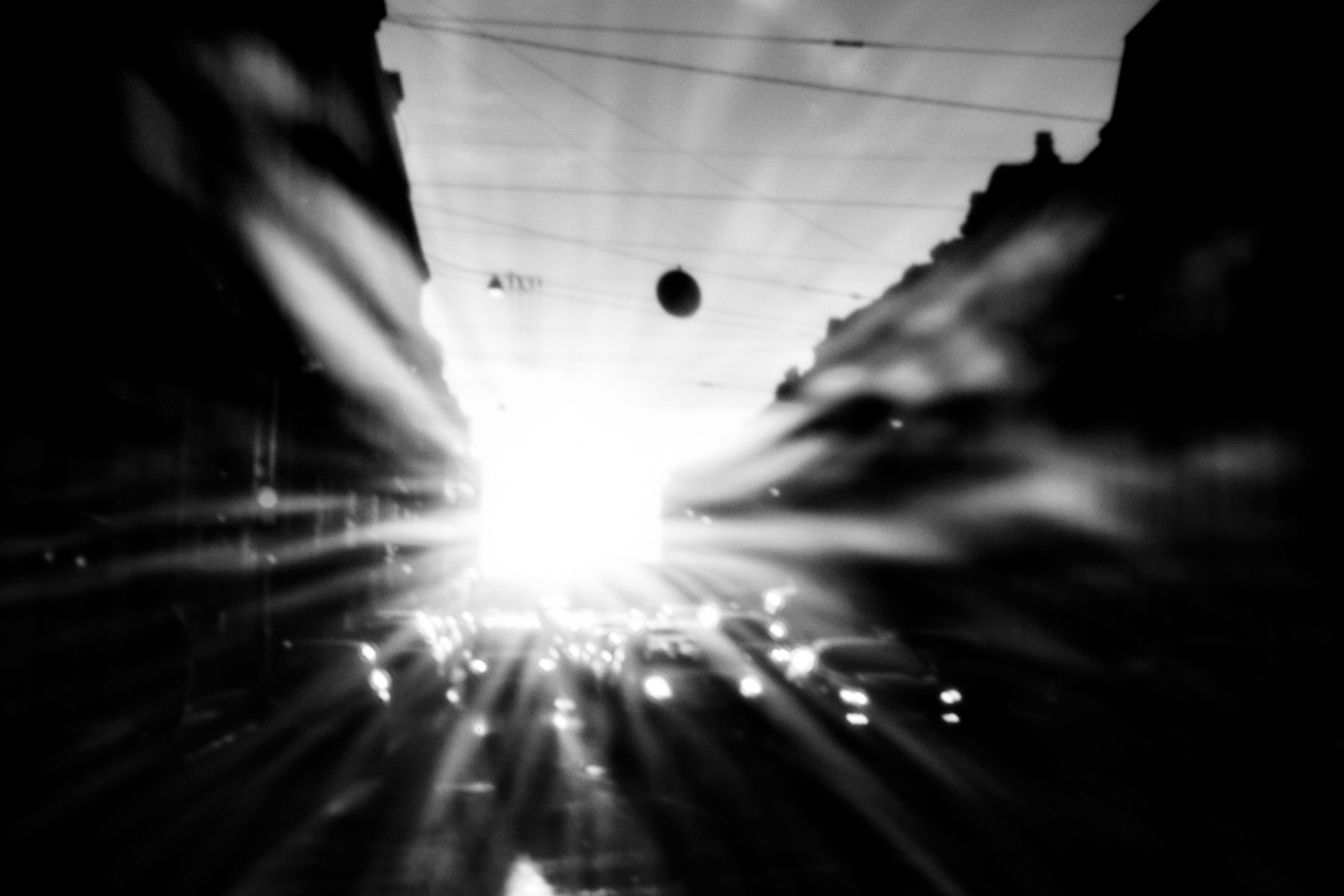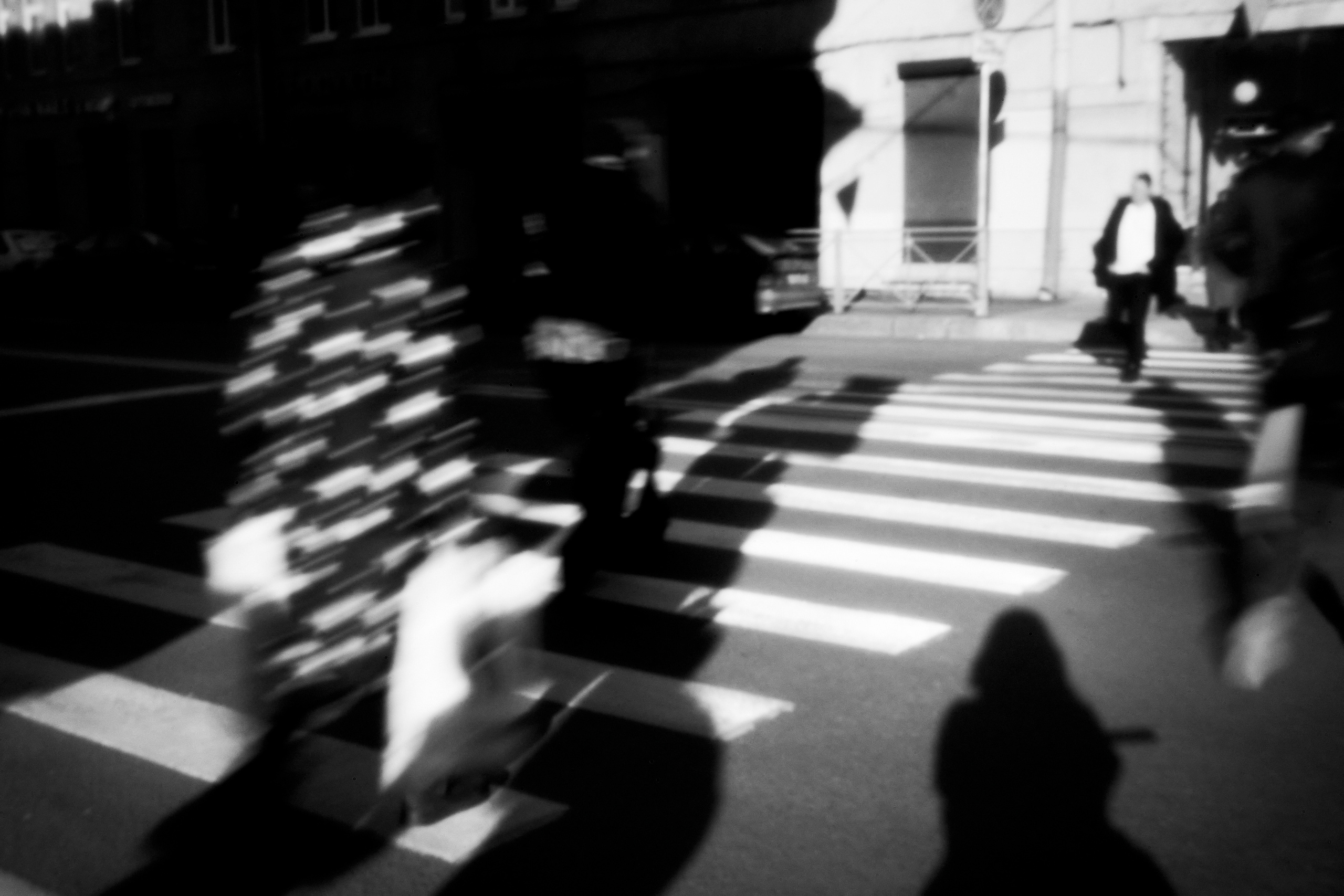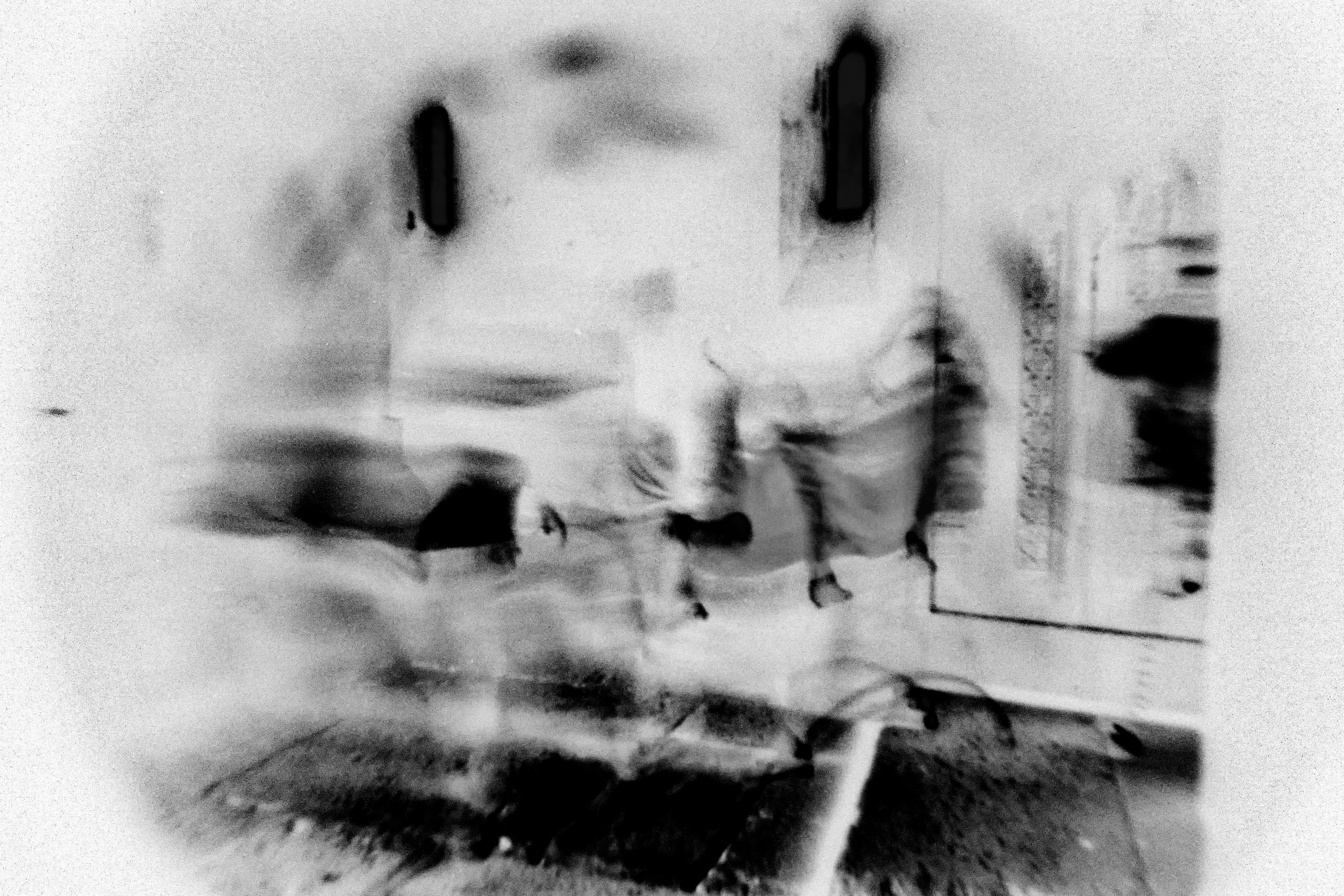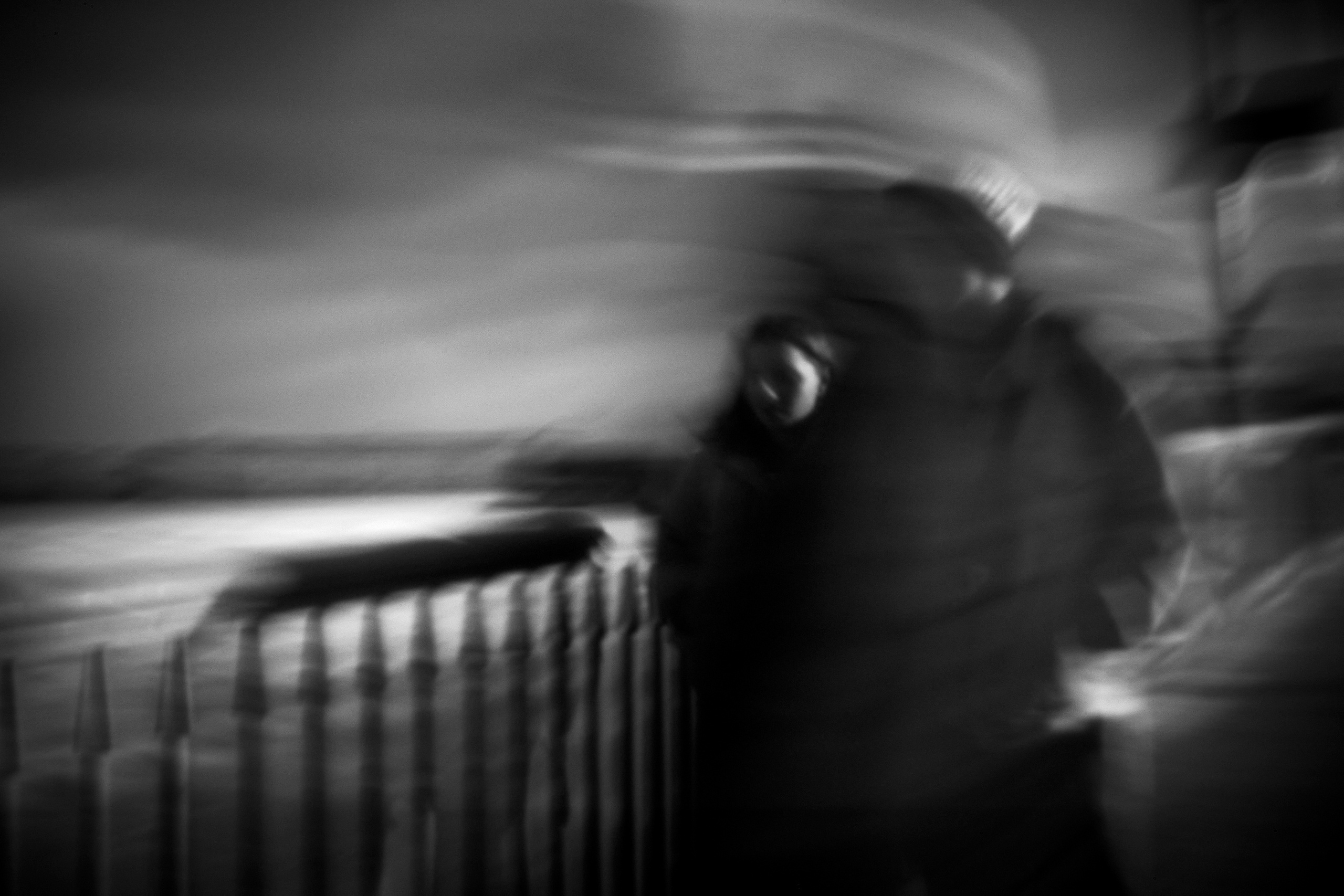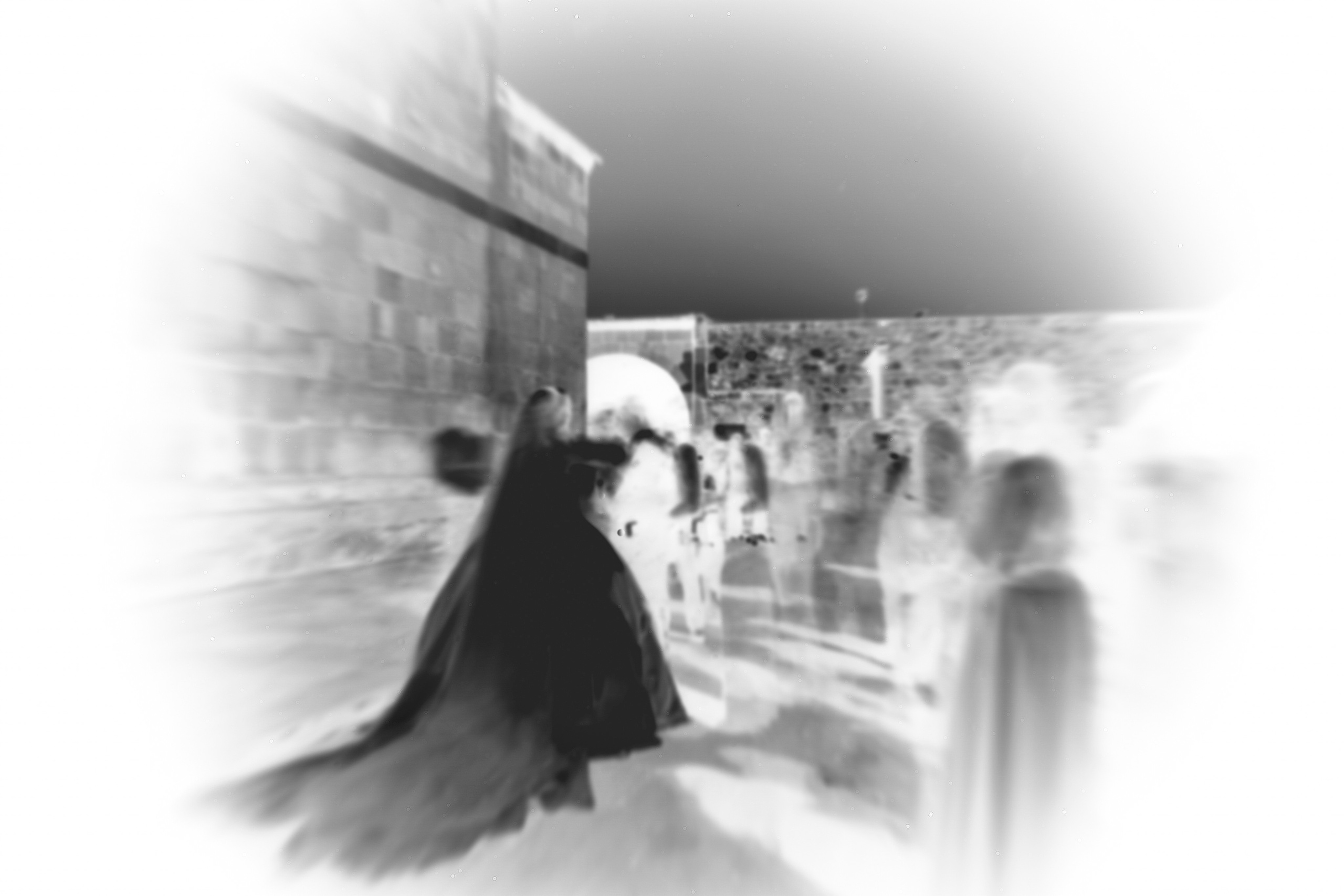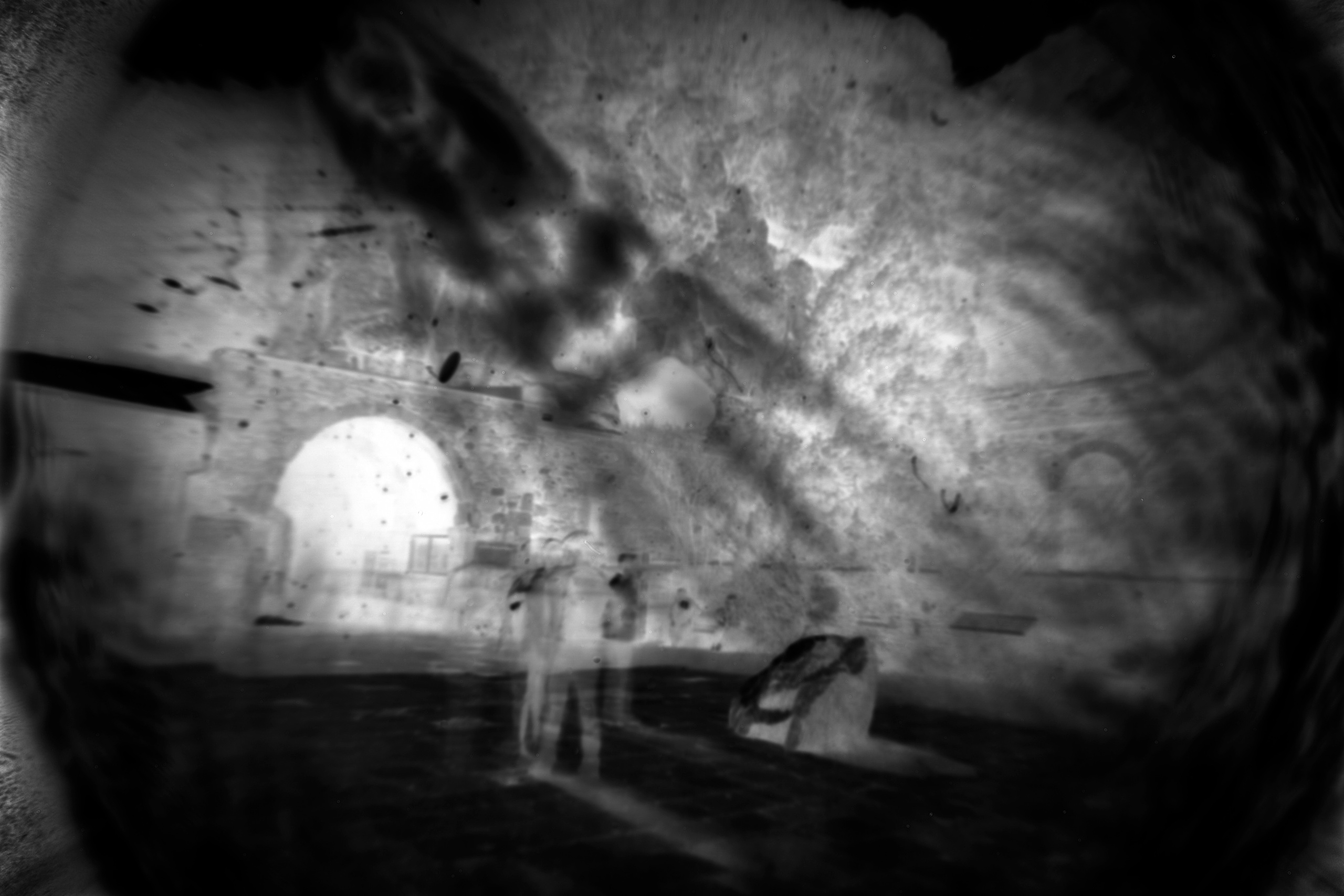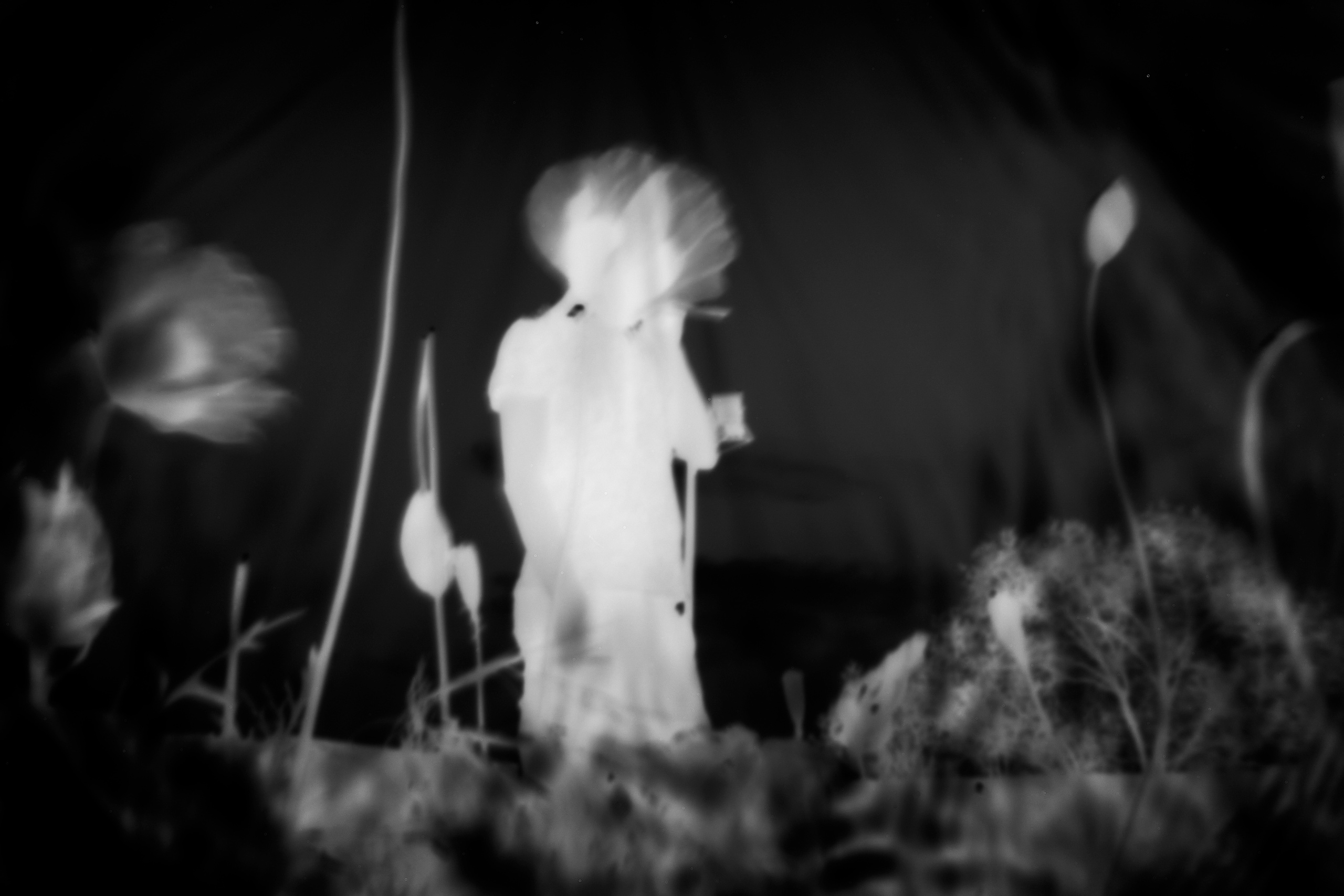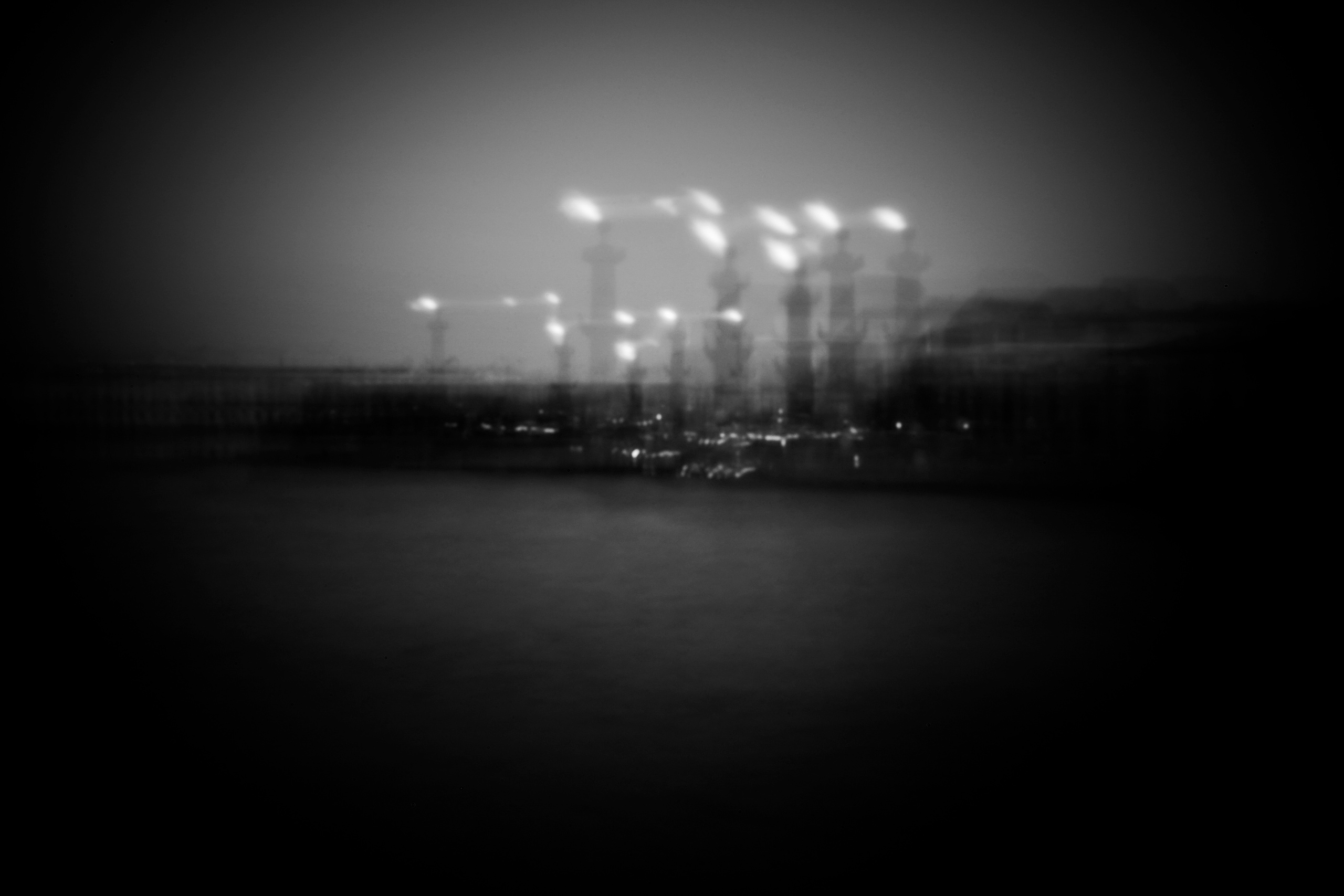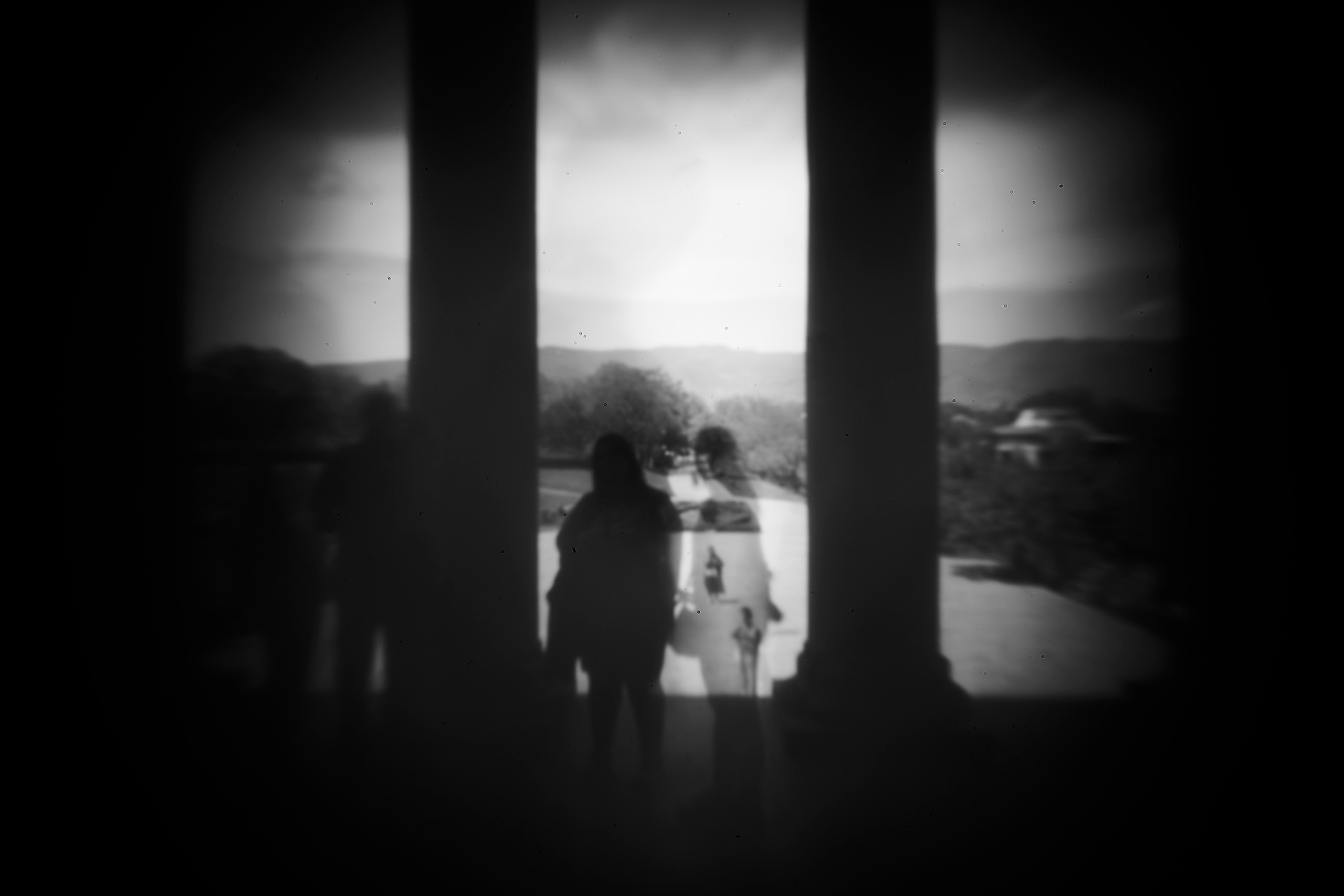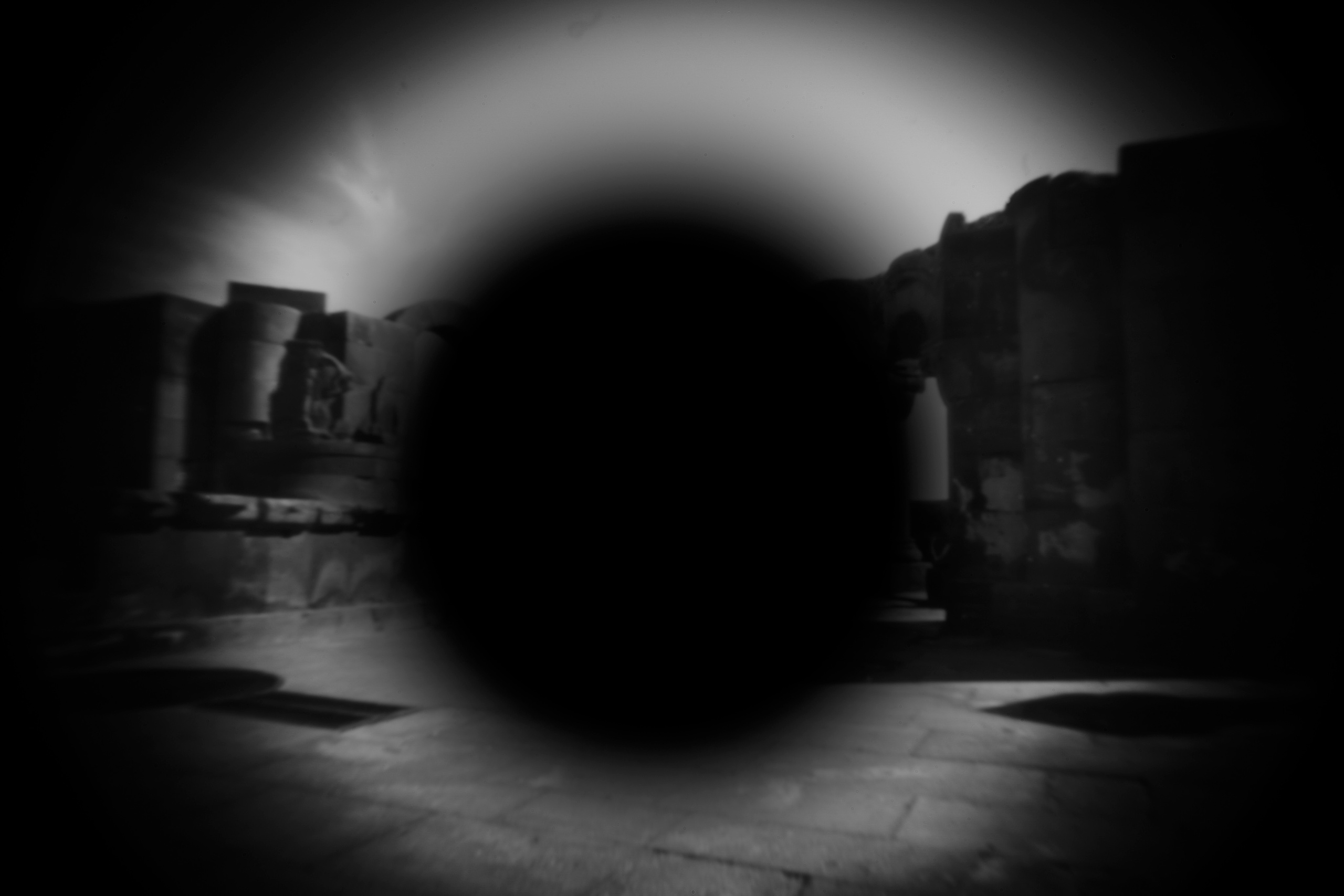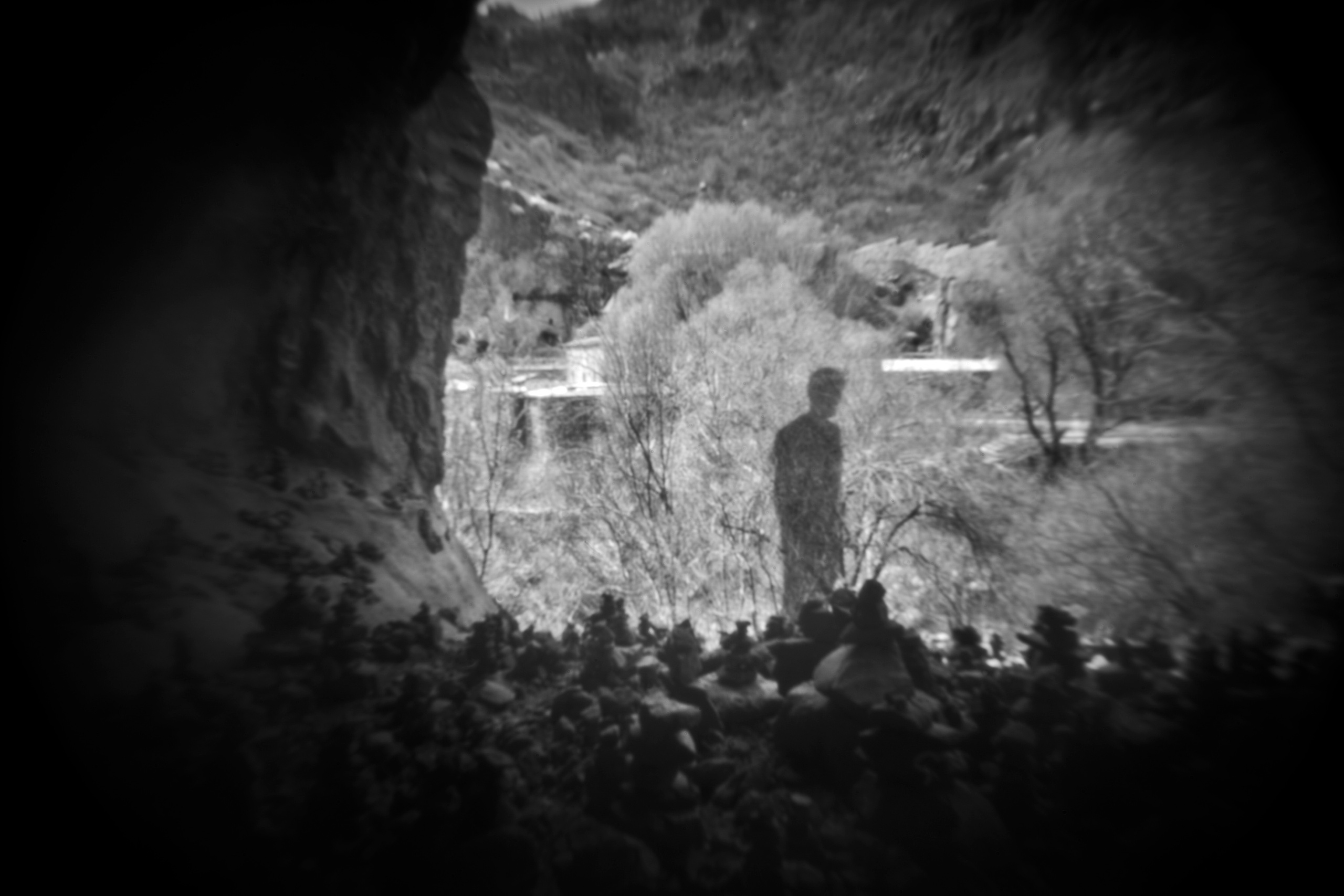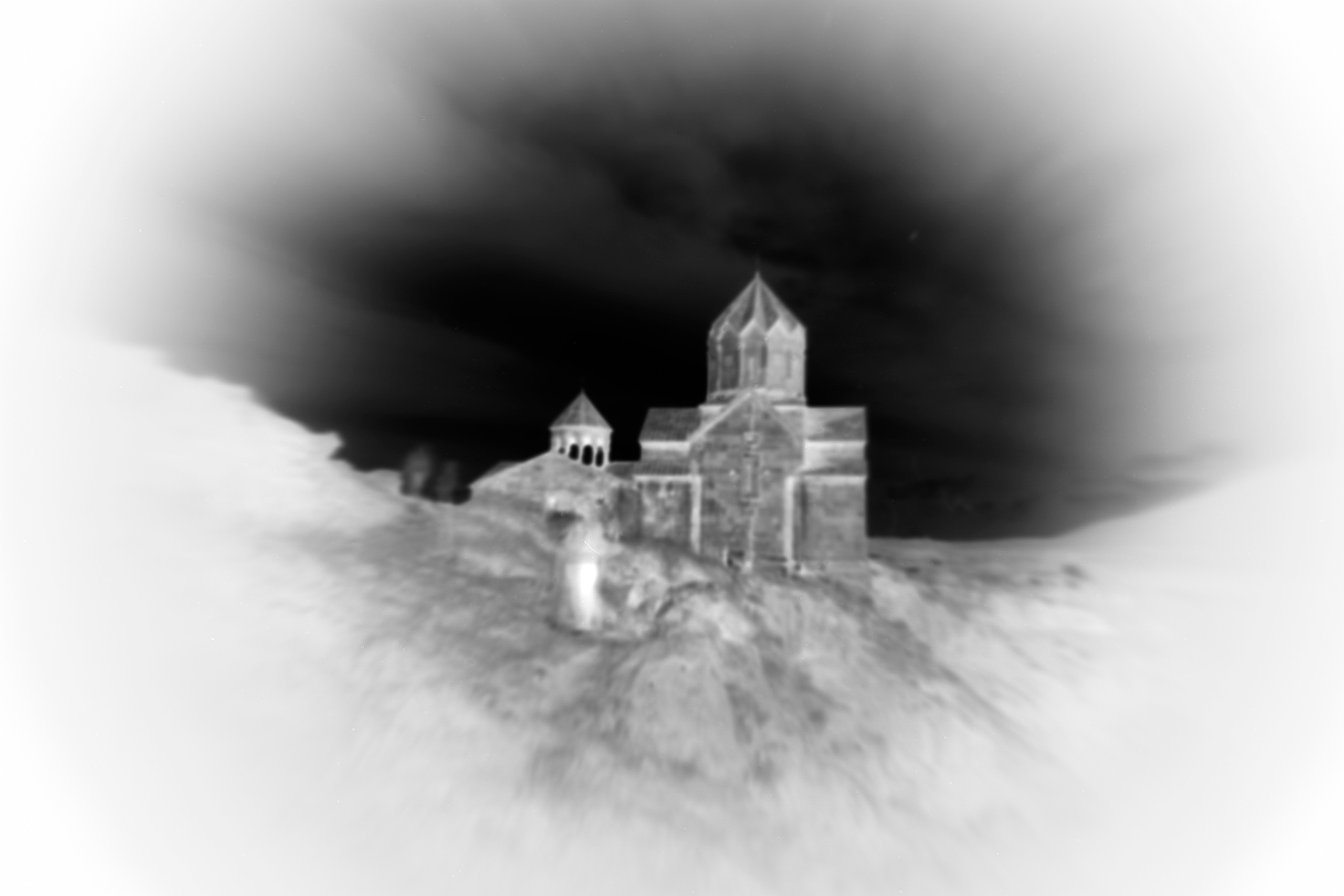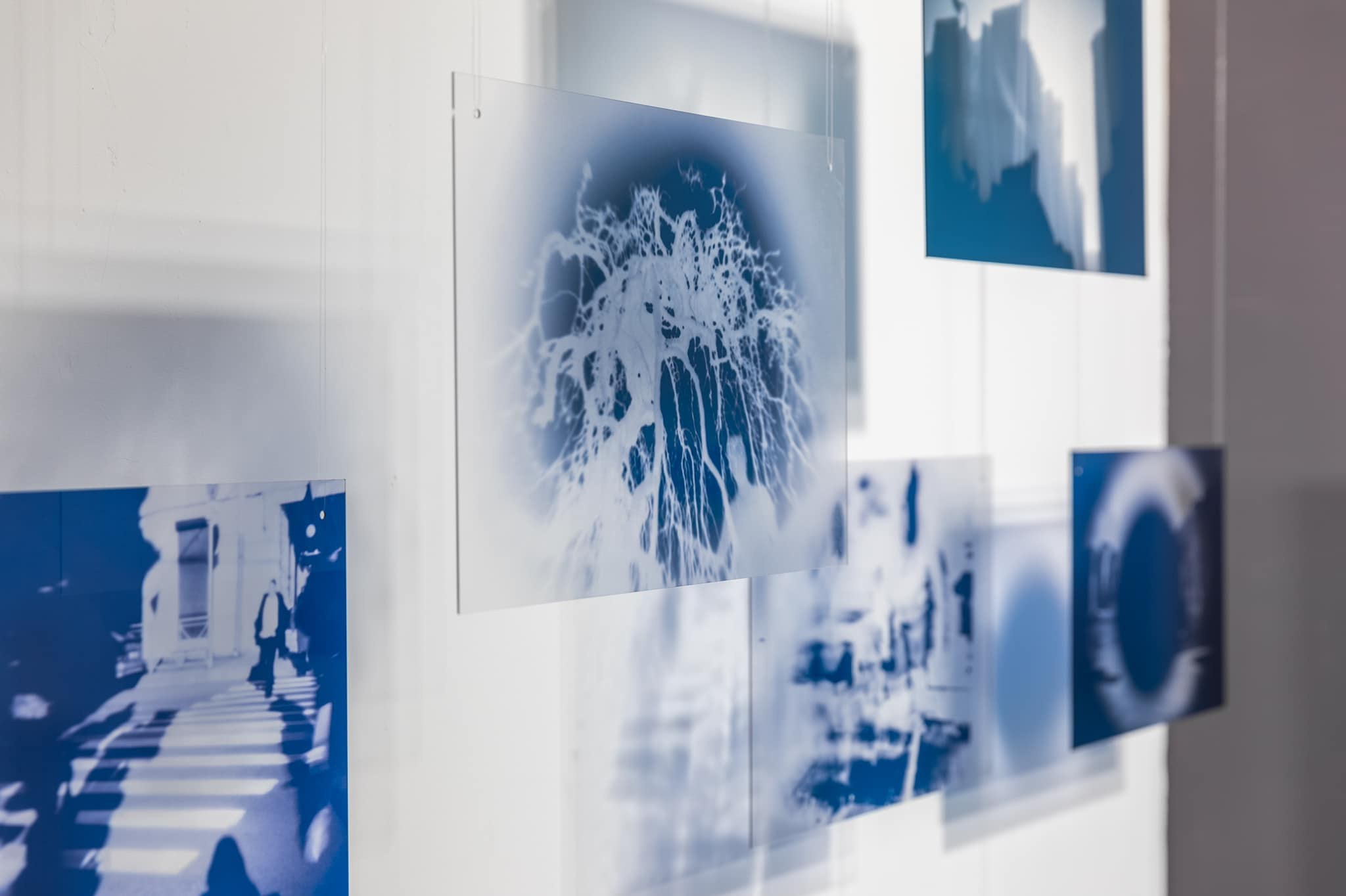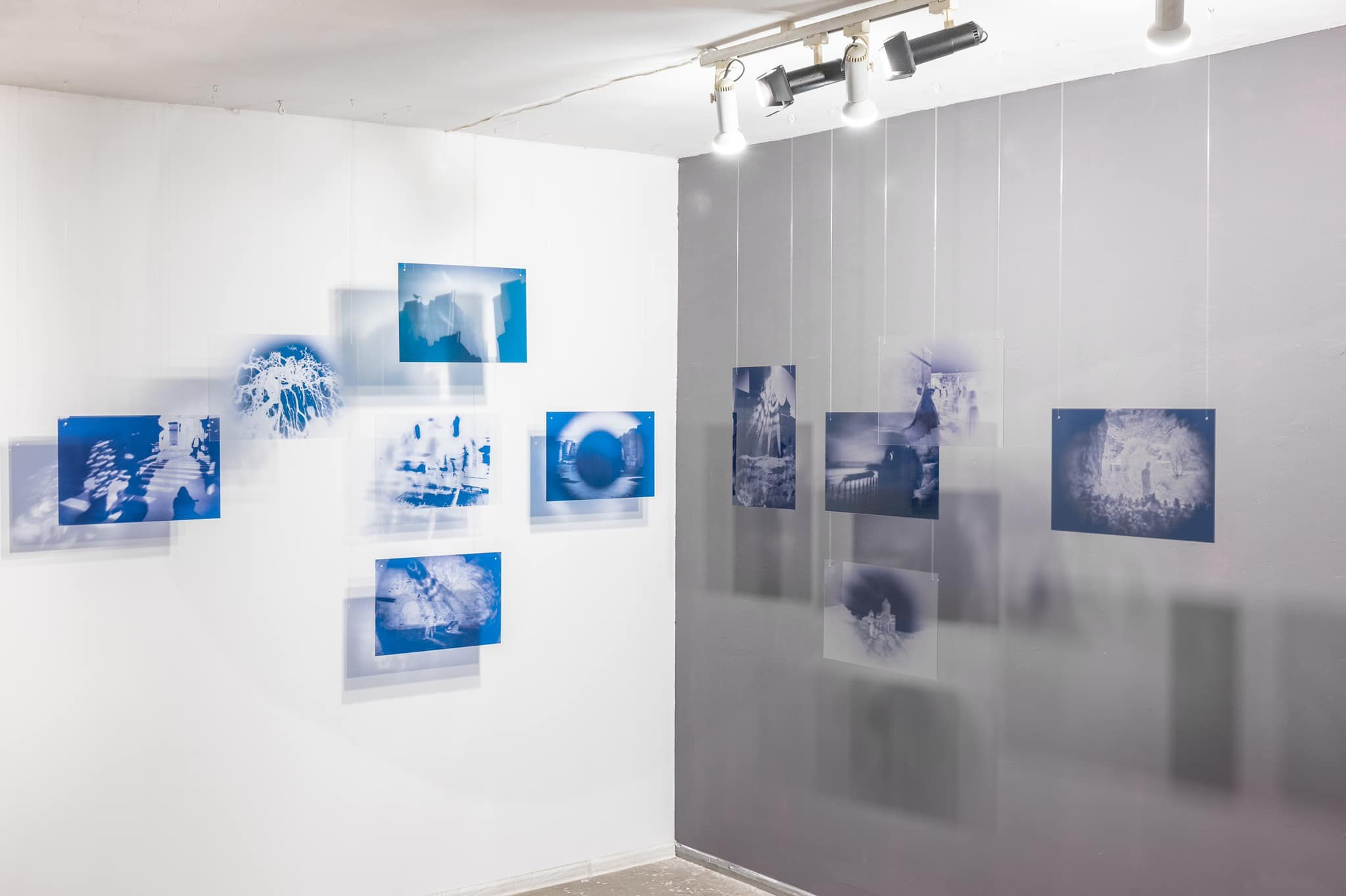Afterimage
2022 — present
The afterimage arises as an optical illusion—an image that lingers before the eyes even after its source has vanished. Usually faint and fleeting, it may disappear within seconds, yet sometimes it persists, turning into a chronic, hallucinatory form. In the spring of this year, we were forced to leave St. Petersburg for Yerevan, departing for the first time in many years from the city where our previous life had unfolded. Photography became a way for us to reflect on the process of emigration, when the images of two places pulse in memory, interpenetrating and overlapping one another.
A long fixation on one city leaves behind a trace that overlays new landscapes, blending impressions beyond recognition. An image from the past, like a flash of bright light, imprints itself on the retina, leaving a disturbing residue. These memory traces may also be compared to medical scans or X-rays, capturing the trauma or fracture of departure. For us, the Afterimage series is not only a collection of phantom images mixing past and present, but also a kind of set of radiographs that record an internal process of healing.
To create the photographs, we turned to pinhole photography—shooting with a lensless camera, a technique that dates back to the dawn of photography. Unlike ordinary perception, it holds a different relationship with time. What seems obvious becomes blurred and dissolved, while the invisible, by contrast, emerges into focus. Rays of light become tangible, while human silhouettes fade into shadows, as though fixing the very process of memory taking shape. Image defects become part of the narrative, mirroring the distortions and illusions that arise in the mind.
An afterimage, like a photograph, can exist as both positive and negative. A positive appears against a dark background, after staring at the sun or another bright light; a negative, conversely, arises on a light background, inverting the colors of the image. Oscillation is also possible—the two forms flicker periodically. The flickering rhythm of the images in this exhibition resonates with our own experience of reality, in which two cities reflect and echo each other, merging in the imagination into a single, non-existent space.
“Afterimage, ” installation in the group exhibition “Thirteen” at the Armenian Center for Contemporary Experimental Art (NPAK), Yerevan, Armenia, 2022.

